In the modern world of AI technology, there are limitless options for what we can do better, quicker and more efficiently without scaring the quality of our work.
This applies to all professions.
And ChatGPT opened many doors to make this happen, especially for educational purposes.
But one question still stays open: where is the limit, and how to utilize such AI innovation to remain on the safe side?
This article discusses the most useful ChatGPT prompts for teachers that can be valuable in learning.
We will delve into various aspects, including:
- the benefits of incorporating ChatGPT prompts into the curriculum,
- practical examples of how teachers can leverage this technology, and
- the ethical considerations associated with its use in the classroom.
Let’s begin!
How ChatGPT Can Help in Educational Processes?
ChatGPT, an artificial intelligence-powered tool, has the potential to transform the field of education by enhancing various aspects of the educational process.
Here’s how ChatGPT can assist both educators and learners with the following approaches:
1. Personalized Learning ✅
A major challenge in education is to meet each student's unique needs and learning styles.
ChatGPT can assist teachers in providing personalized learning experiences.
By analyzing the unique requirements of each student, ChatGPT can generate tailored prompts and exercises, adapting the content and pace to suit individuals’ abilities.
2. Instant Feedback and Assessment ✅
Timely feedback is crucial for students to gauge their progress and make necessary adjustments.
ChatGPT can provide immediate feedback on assignments, projects, and assessments.
Its ability to analyze and understand student responses allows for valuable insights that help teachers identify areas of improvement and provide targeted guidance.
3. Interactive Virtual Tutoring ✅
ChatGPT can serve as a virtual tutor, interacting with students through conversations to strengthen their understanding.
Students can ask questions and receive detailed explanations, allowing for a deeper understanding of concepts.
This real-time interaction fosters a sense of active participation and can be particularly beneficial for students who hesitate to seek clarification in a traditional classroom setting.
4. Creative Writing and Critical Thinking ✅
Writing is an essential skill across disciplines, and ChatGPT can be a valuable tool to foster creativity and critical thinking.
ChatGPT can inspire students to explore their ideas, expand their vocabulary, and develop their storytelling abilities by providing writing prompts and suggestions.
Additionally, the model can encourage students to think critically by posing thought-provoking questions and guiding them through logical reasoning processes.
5. Language Learning Support ✅
For students learning a new language ChatGPT can serve as an interactive language partner.
It can generate conversation prompts, simulate dialogue scenarios, and even correct grammar and pronunciation.
This immersive experience can boost language acquisition and confidence in communication.
6. Research and Information Retrieval ✅
In an age of vast digital resources, students often need guidance in conducting effective research.
ChatGPT can assist students by suggesting relevant sources, helping them refine their search queries, and summarizing complex information.
This not only saves time but also teaches students valuable skills in information literacy.
Educators can use ChatGPT to enhance the learning experiences of students by making them more dynamic, engaging, and personalized.
The combination of teacher expertise and AI capabilities can transform education into an interactive journey that empowers students to achieve their full potential.
However, it is crucial to consider ethical factors when implementing ChatGPT in educational settings, despite its various advantages.
The protection and well-being of students should be ensured through prioritizing privacy, data security, and responsible use of AI.
6 ChatGPT Prompts for Teachers – Ideas That Will Help You Streamline Your Classes
As a teacher, you look for innovative approaches to improve your lessons and enliven the classroom for students.
ChatGPT is a great way to improve a student's education and make your lessons more entertaining.
To that end, I offer the following ChatGPT prompts:
1. Discussion Starters
Use ChatGPT to generate thought-provoking conversation starters and get your students talking about important topics.
These questions can be tailored to any aspect of your study material, fostering both inquisitiveness and participation from your students.
Encouraging stimulating discussions can create a lively classroom community where ideas are freely shared and explored.
Example Prompt for Discussion Starters
To get started with the ChatGPT prompt, you need to have a clear idea on what result you’re expecting to get.
Here is an example prompt:
"Discuss the ethical implications of using artificial intelligence in everyday life."
I had some fun with that suggestion in the illustration that follows.
To keep students engaged, I asked ChatGPT to incorporate real-world examples and at least one question.
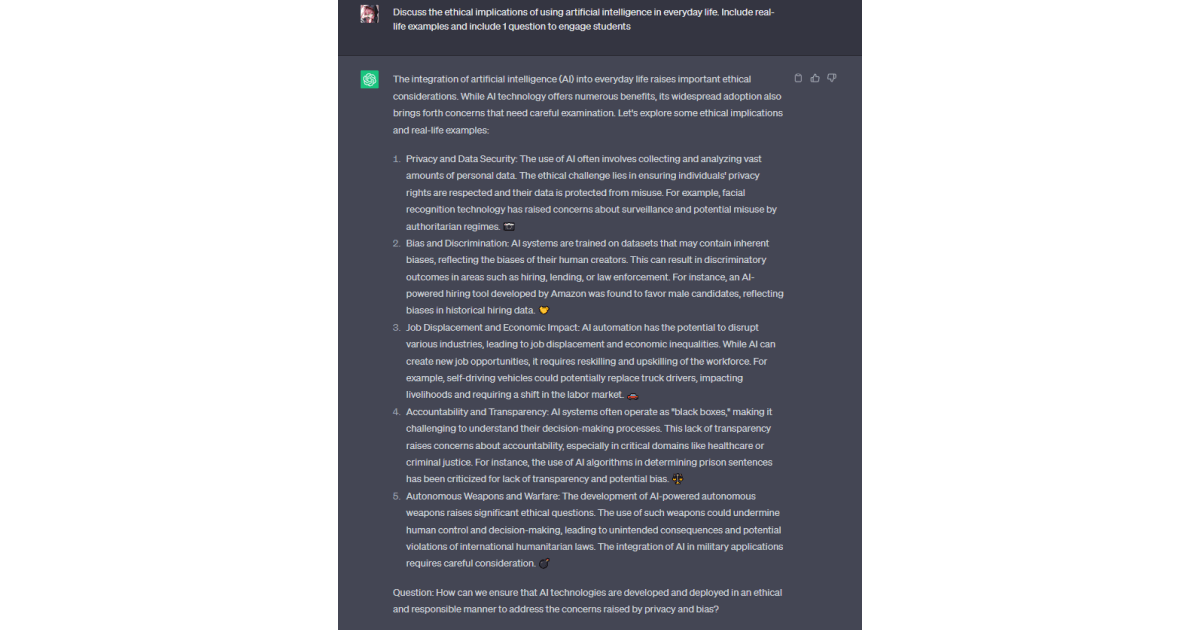
Keep in mind that ChatGPT will provide more helpful responses if you provide as much detail as possible.
2. Quiz and Assessment Questions
You can save time by utilizing ChatGPT to generate quiz and assessment questions.
Simply provide the relevant context or topic, and ChatGPT can generate a set of questions for formative or summative assessments.
This lets you quickly create assessments that test your student's understanding and knowledge.
Example Prompt for Quiz and Assessment Questions
Here is an example for multiple-choice questions on a given topic:
"Generate five multiple-choice questions on the topic of photosynthesis."
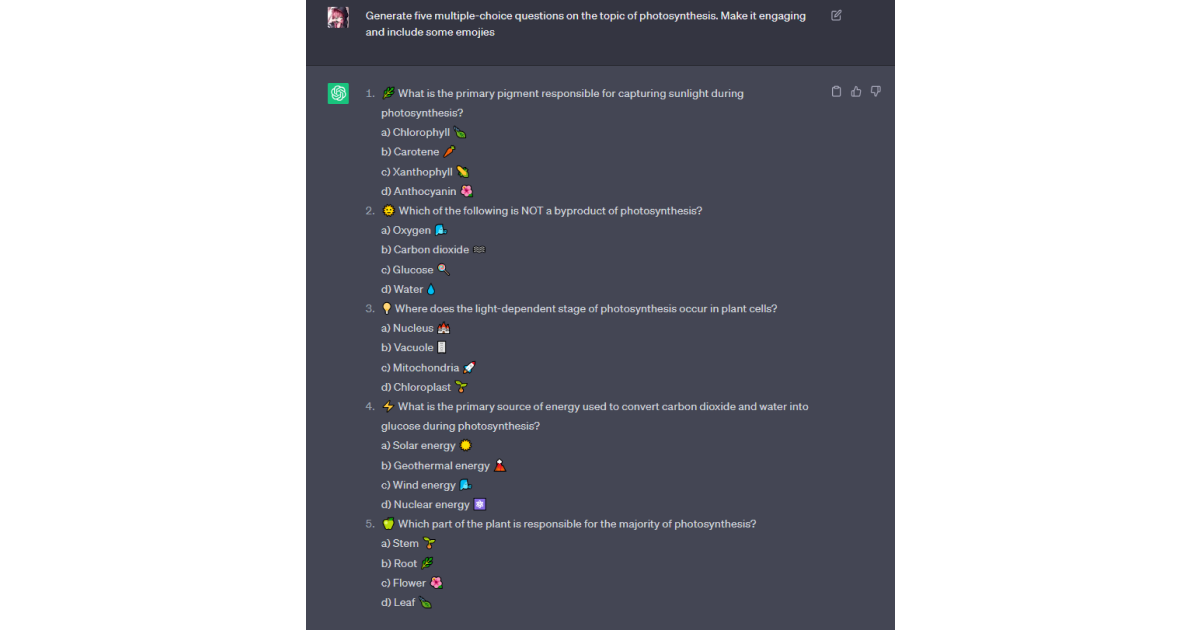
As you can see, I requested from ChatGPT that my version of this prompt from ChatGPT include emojis for the purposes of this example.
The AI-generated content can be as complex or simple as you need it to be.
With that being said, you can also generate content to suit children.
3. Writing Prompts
By using ChatGPT to generate writing prompts, you can encourage creativity and advance writing abilities.
These writing prompts, which can be anything from persuasive essays to narrative writing, aid students in improving their communication abilities and idea expression.
Example Prompt for Writing
For writing prompts it is simple to enter what you want ChatGPT to generate (short or long story, introduction, conclusion, etc.).
Here is an example:
"Write a short story based on the prompt: 'Lost in a mysterious forest.'"
While the topic is a necessary element, you can also include additional requests, such as the tone of voice, writing style, length etc.
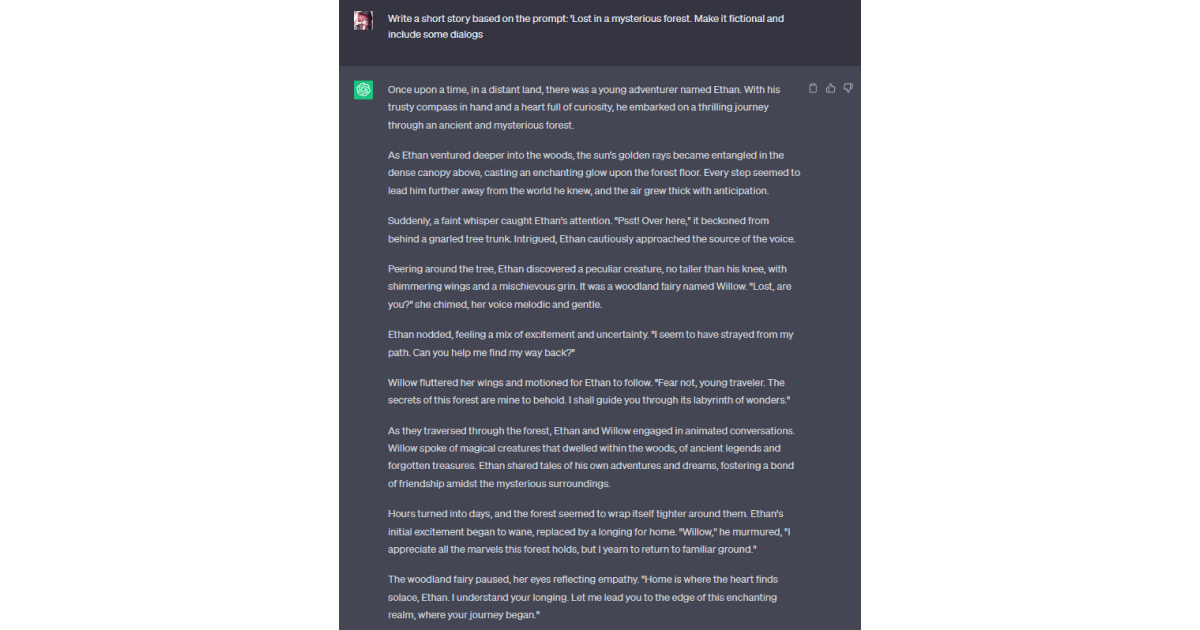
The best thing about ChatGPT is that it lets you get a variety of results without having to repeat the prompt.
As a result, after the initial version is created, you can easily:
4. Research Topic Suggestions
Use ChatGPT to suggest study areas to help your students find pertinent research topics.
ChatGPT can help students hone their research questions by generating a list of potential research topics based on the keywords they enter or the context they provide.
Example Prompt for Research Topic
Similar to the examples from the previous prompts, when offering research topic suggestions, be sure to clearly state the request and identify the topic focus.
Here is a prompt example:
"Suggest three research topics related to renewable energy sources."
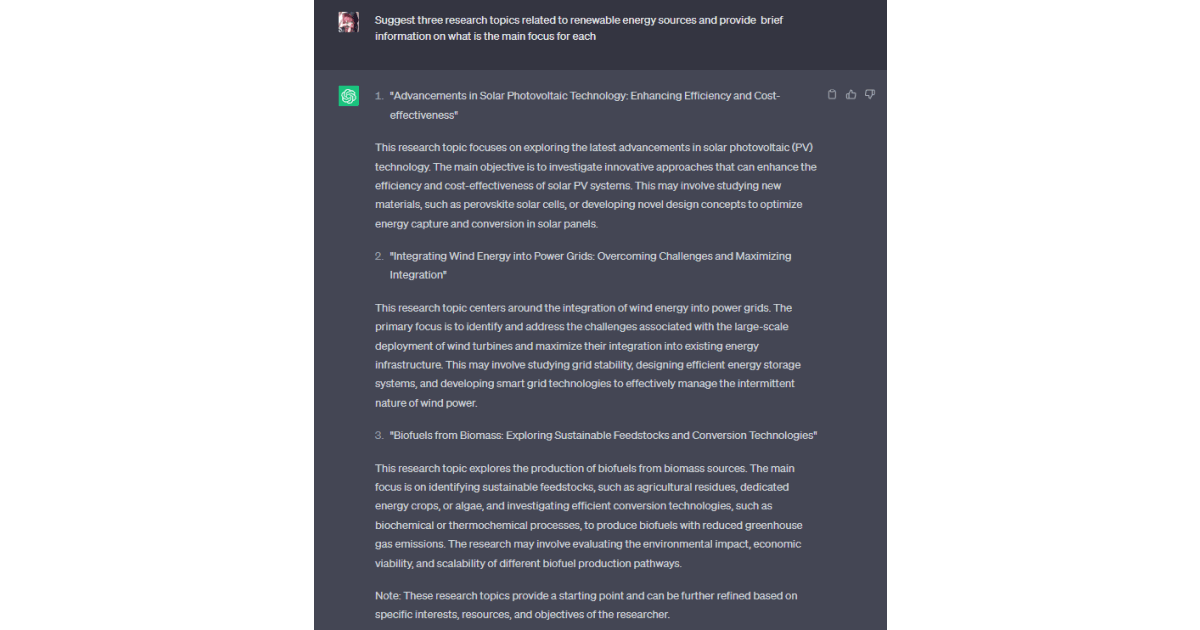
You can easily get research suggestions using the generic ChatGPT prompt format.
Another choice is to add requests that will genuinely make your life easier, like I did.
Besides, every topic needs a brief introduction.
Then, why not use the same prompt to complete your task in one strike, right?
5. Problem-Solving Scenarios
Create credible case studies or scenarios using ChatGPT to promote critical thinking and problem-solving abilities.
These questions can force students to think critically and come up with solutions, leading to a deeper comprehension of the material.
Example Prompt for Problem-Solving Scenarios
The scenario that involves solving problems is where ChatGPT shines the most.
It can not only assist you in coming up with them, but you can also use the same chat to get answers with detailed explanations.
Additionally, ChatGPT has the ability to find errors in codes and formulas as well as other mathematical brainteasers.
When creating problem-solving scenarios, use this prompt:
"Present a scenario where students must use mathematical concepts to solve a real-life problem."
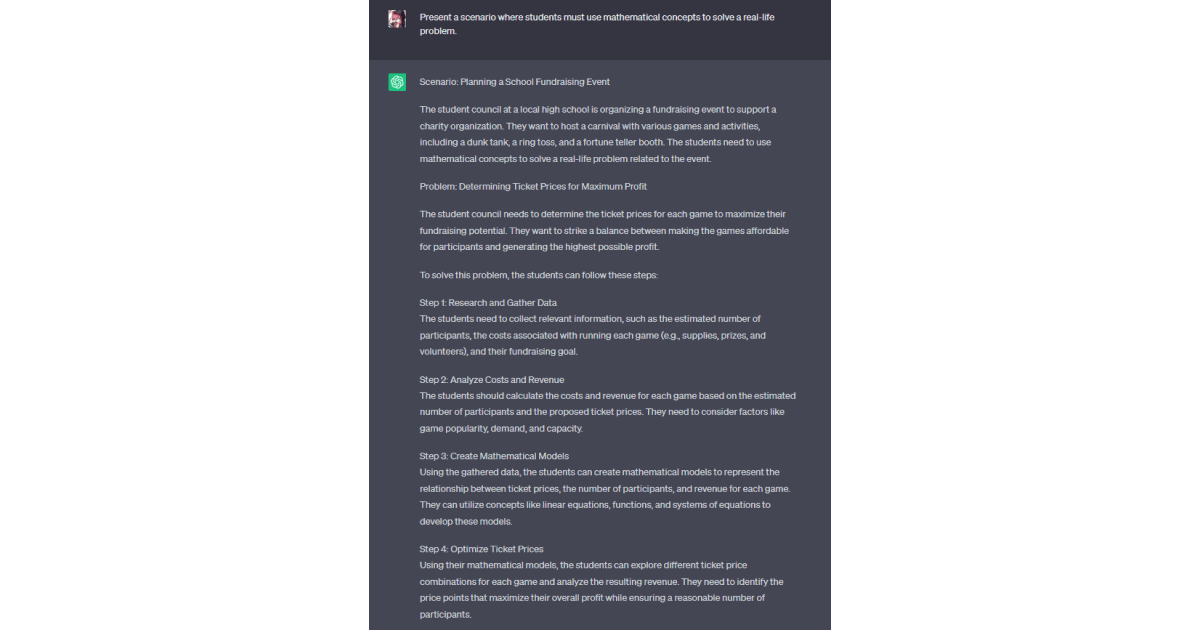
6. Language Practice
Use ChatGPT to generate practice prompts for vocabulary, grammar, or conversational skills to aid language learning.
For language teachers and students looking for extra practice outside of the classroom, these prompts can be especially helpful.
Example Prompt for Language Practice
You can use ChatGPT for various tasks that require languages other than your native language, in addition to its ability to understand 90+ languages.
Check out our article on translation prompts if you want to learn more.
However, to get language practice for your class, make sure to specify the language and the practice, like in the following example:
"Provide five conversational prompts to practice using the past tense in English."
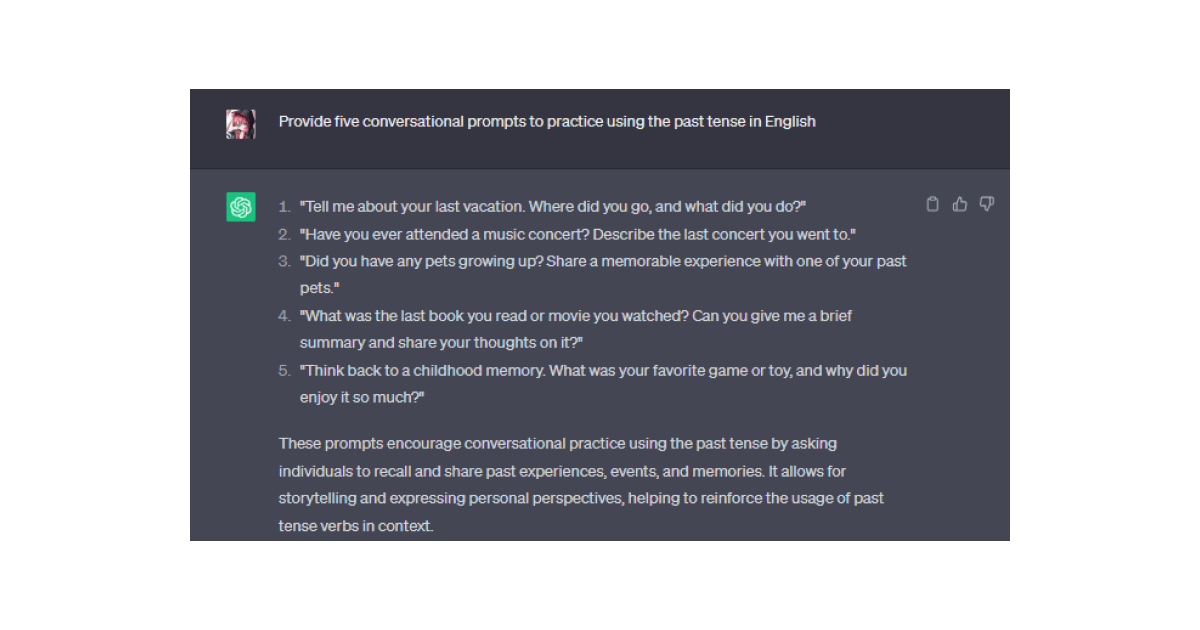
Always guide and review ChatGPT's outputs to ensure they are appropriate and aligned with your educational goals.
Even though ChatGPT prompts can be a huge time saver, you should still rely on your own knowledge and experience to get the most out of using them.
Let’s Wrap Up
Implementing advanced AI-powered tools like ChatGPT in the educational landscape can significantly enhance the learning process for teachers and students alike.
By utilizing its powerful capabilities, educators can access tools designed to improve content creation, language proficiency, and workflow productivity.
With that said, here is another ChatGPT alternative that, in terms of features, accessibility, and the caliber of generated content, can be a nice choice for some of you.
It is called TextCortex’s Zeno ChatGPT add-on.
Let’s take a brief overview!
How Zeno ChatGPT Add-on Can Assist Teachers?
By leveraging Zeno ChatGPT, teachers can boost their productivity by expediting content generation.
This allows them to focus more on individualized instruction and student engagement.
The user-friendly interface and intuitive features facilitate a seamless experience, enabling educators to harness the power of AI without significant technical expertise.
Moreover, Zeno ChatGPT offers teachers fresh ideas and perspectives to enhance their teaching methods and content delivery with these additional features:
✒️ Rewriting toolbar — empowers teachers to effortlessly refine and optimize their instructional materials, ensuring high-quality and engaging content.
✒️ Creator Suite — features AI-generated templates, and offers educators a valuable resource to streamline lesson planning and content development.
✒️ Readability checker — aids in creating materials that are accessible and understandable to students of varying reading levels.
✒️ Multilingual capabilities — assist in breaking language barriers and fostering inclusive learning environments.
With support for over 25 languages, teachers can cater to the diverse linguistic needs of their students, promoting cross-cultural understanding and effective communication.
Incorporating Zeno ChatGPT into the educational toolkit can:
✔️ Revolutionize the learning process
✔️ Foster creativity, efficiency, and effectiveness
✔️ Unlock new possibilities
✔️ Expand their instructional capabilities
✔️ Create an engaging and dynamic learning environment for their students
Ready for a ride?
Sign up today and embark on a journey of enhanced teaching and learning with Zeno ChatGPT.

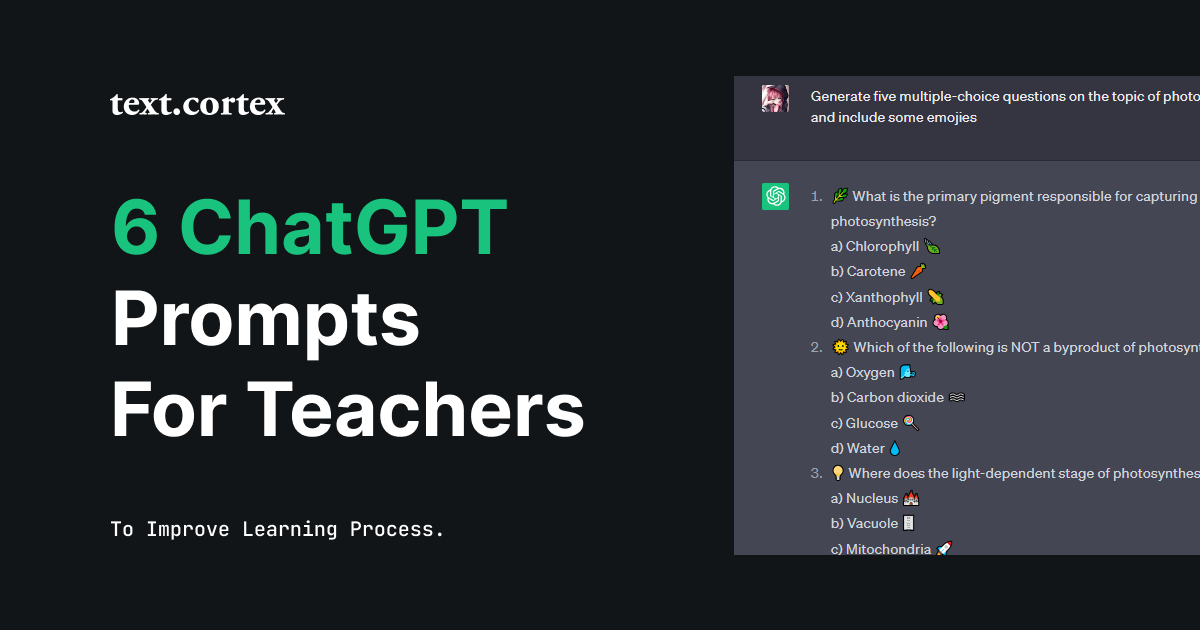
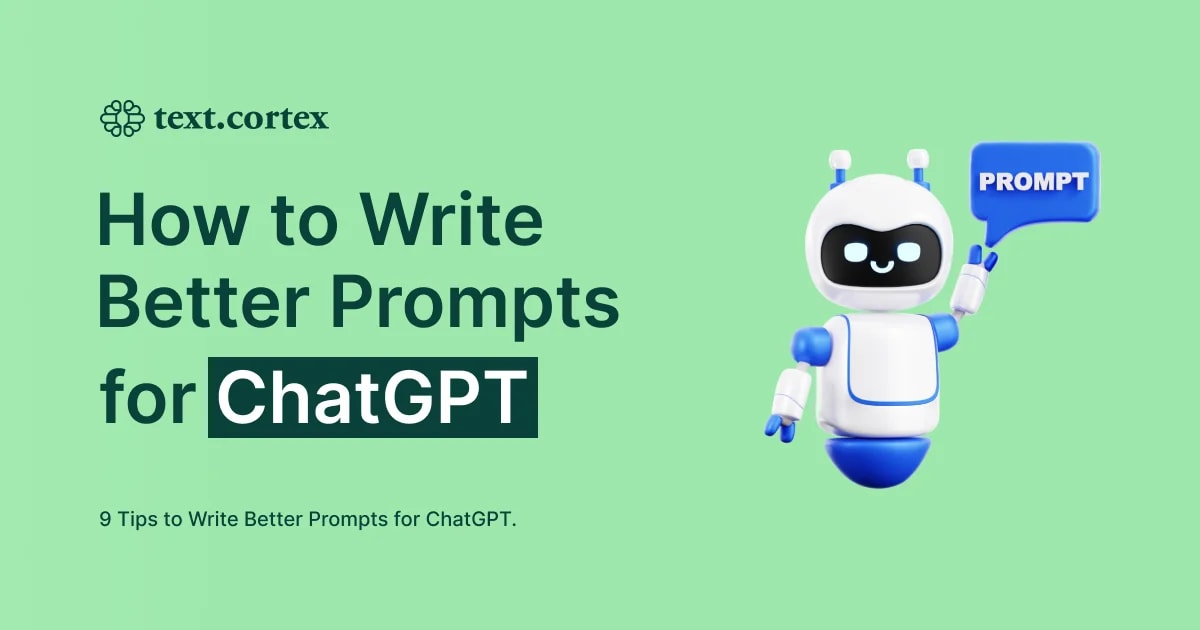
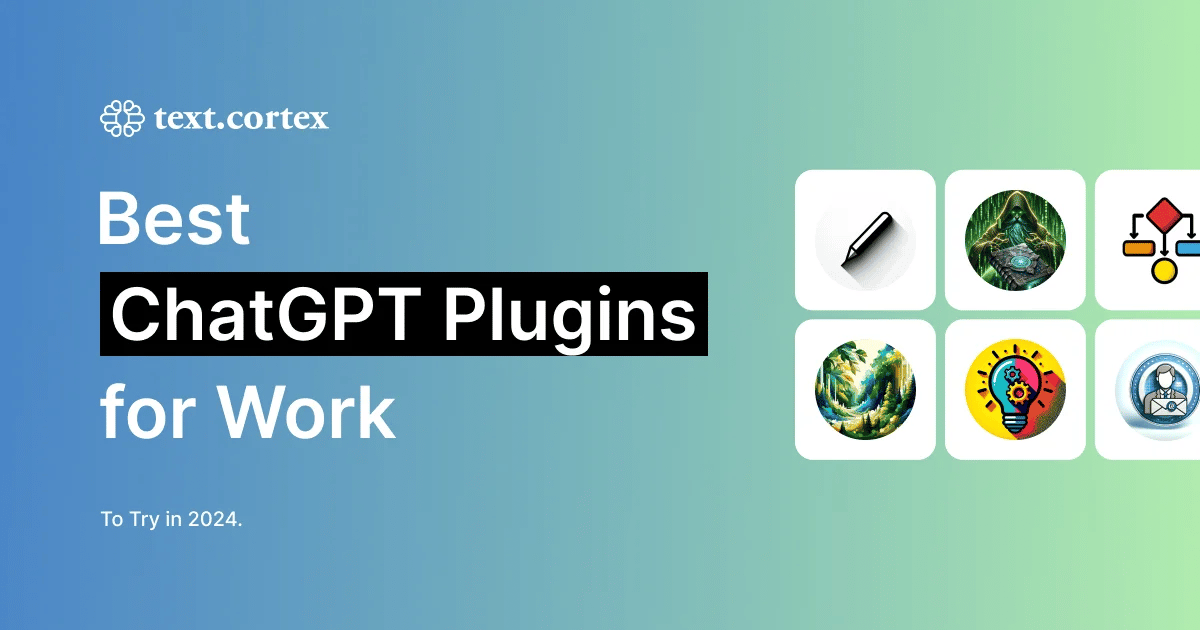
%20(3).png)
